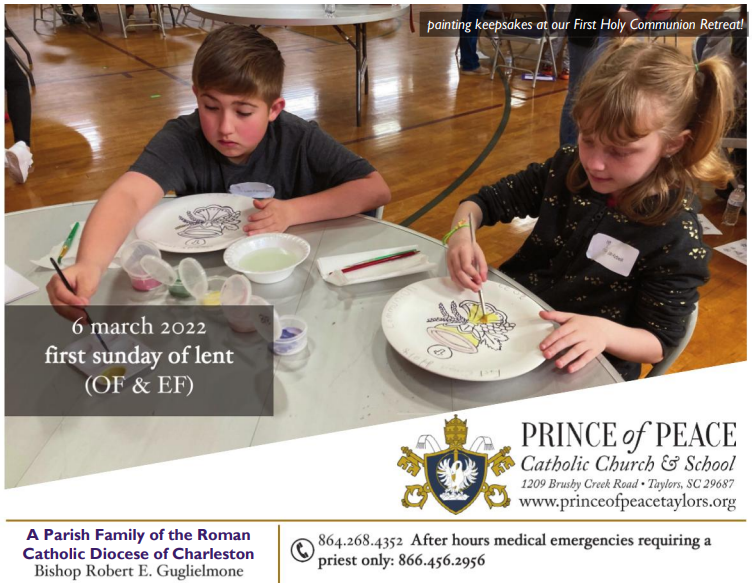
6 March 2022 Bulletin
Click to read this week’s bulletin: 6 March 2022 Bulletin

Click to read this week’s bulletin: 6 March 2022 Bulletin
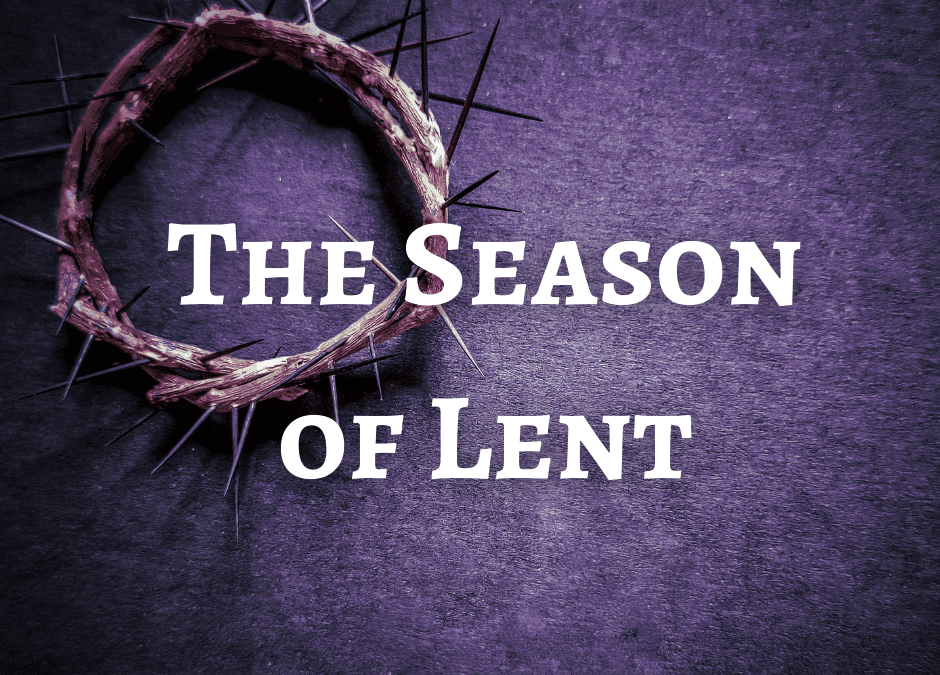
Ideas for Observing Lent in the Domestic Church
LENT: a time to grow closer to God.
A time to take up practices that lead us toward him and to leave behind practices that distract us from him.
“Unless there is a Good Friday in your life, there can be no Easter Sunday.” – Ven. Fulton Sheen
“Apart from the cross, there is no other ladder by which we may get to heaven.” – St. Rose of Lima
“The Lord measures out perfection neither by the multitude nor the magnitude of our deeds, but by the manner in which we perform them.” – St. John of the Cross

Click to read this week’s bulletin: 27 February 2022 Bulletin
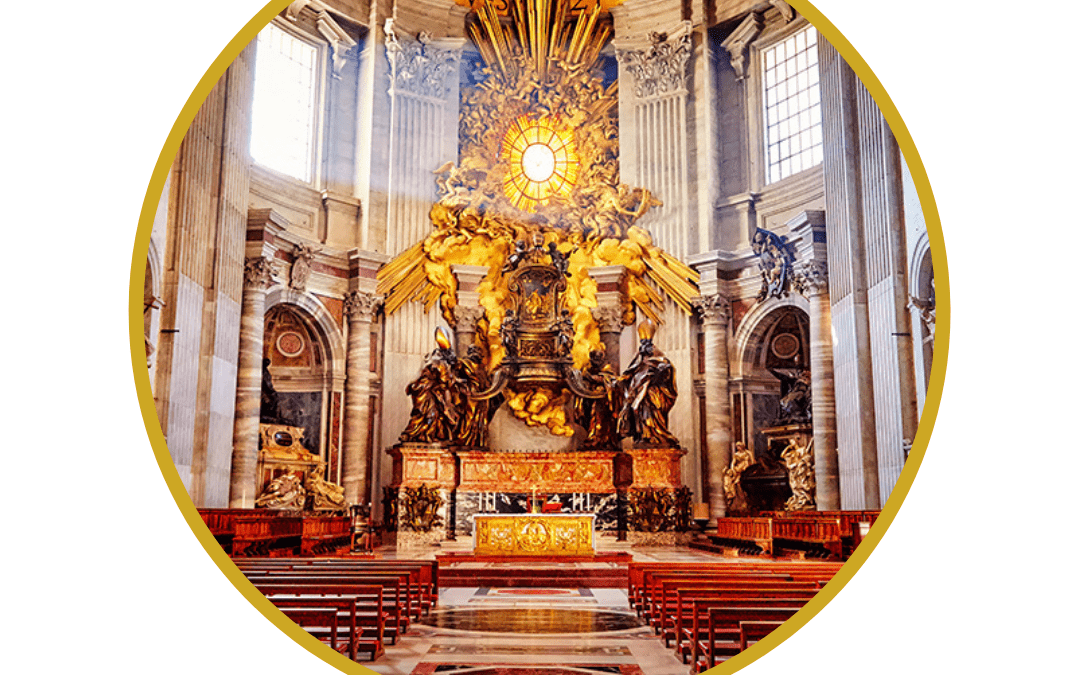
22 February: Feast of the Chair of Saint Peter. While it may seem like a strange feast, the church is not just celebrating a piece of furniture today. This Feast has been celebrated since the early Church and has multifold meaning. First, it does refer to the actual chair that Peter sat on as the first pope. Officials in the Roman Empire would sit on chairs for official work. This tradition was replicated in the Church. Cathedra is Latin for “chair” or “throne” and denominates the chair or seat of a bishop, hence “cathedral” denominates the bishop’s church in an episcopal see. The physical “chair of Peter” is encased in a sculpture designed by Bernini located in Saint Peter’s Basilica in Rome. In the apse of the Basilica, a great bronze throne encloses the wooden chair from the ninth century, believed to be Peter’s own chair. On the chair itself, Bernini depicts three scenes from Peter’s life: the giving of the keys (symbolizing authority to lead the Church), the washing of feet (symbolizing Peter’s office is one of service), and Jesus’ instruction to “Feed my sheep” (pointing to Peter’s role as teacher and guide). Below the chair are statues of four doctors of the Church (Saints Athanasius, John Chrysostom, Ambrose, Augustine). Above the throne is an oval window with the Holy Spirit depicted as a dove. The symbolism of this great work of art is clear: the Holy Spirit guides the Church through Saint Peter and his successors, who authoritatively teach the Word of God through Sacred Scripture and Tradition. This feast day is also about the spiritual authority bestowed upon Saint Peter by Jesus: “You are Peter, and on this rock I will build my church, and the gates of hell shall not prevail against it. I will give you the keys to the kingdom of heaven, and whatever you bind on earth shall be bound in heaven, and whatever you loose on earth shall be loosed in heaven.” (Matt. 16:18-19). Pope Benedict XVI wrote: “So what was the ‘Chair’ of St Peter? Chosen by Christ as the ‘rock’ on which to build the Church, he began his ministry in Jerusalem… The Church’s first ‘seat’ was the Upper Room, and it is likely that a special place was reserved for Simon Peter in that room where Mary, Mother of Jesus, also prayed with the disciples… Then Peter went to Rome, the center of the Empire… So it is that the See of Rome, which had received the greatest of honors, also has the honor that Christ entrusted to Peter of being at the service of all the particular Churches for the edification and unity of the entire People of God… The See of Rome, after St Peter’s travels, thus came to be recognized as the See of the Successor of Peter, and its Bishop’s ‘cathedra’ represented the mission entrusted to him by Christ to tend his entire flock… Celebrating the ‘Chair’ of Peter, therefore, means attributing a strong spiritual significance to it and recognizing it as a privileged sign of the love of God, the eternal Good Shepherd, who wanted to gather his whole Church and lead her on the path of salvation.” In the fourth century, St. Jerome wrote to Pope Damascus I: “I follow no leader but Christ and join in communion with none but Your Blessedness, that is, with the chair of Peter. I know that this is the rock on which the Church has been built.”
Ideas for celebrating this feast at home:
(sources: ncregister.com; simplycatholic.com; www.vaticannews.va; Franciscanmedia.org; edwardsri.com)
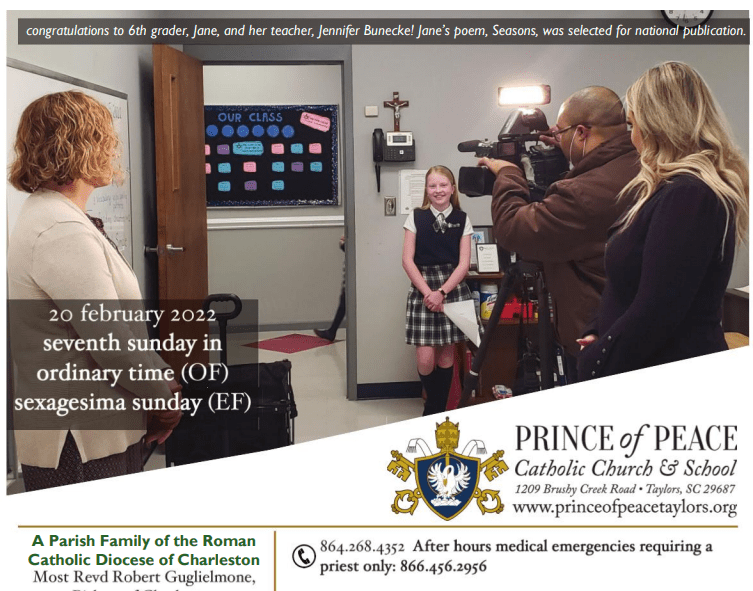
Click to read this week’s bulletin: 20 February 2022
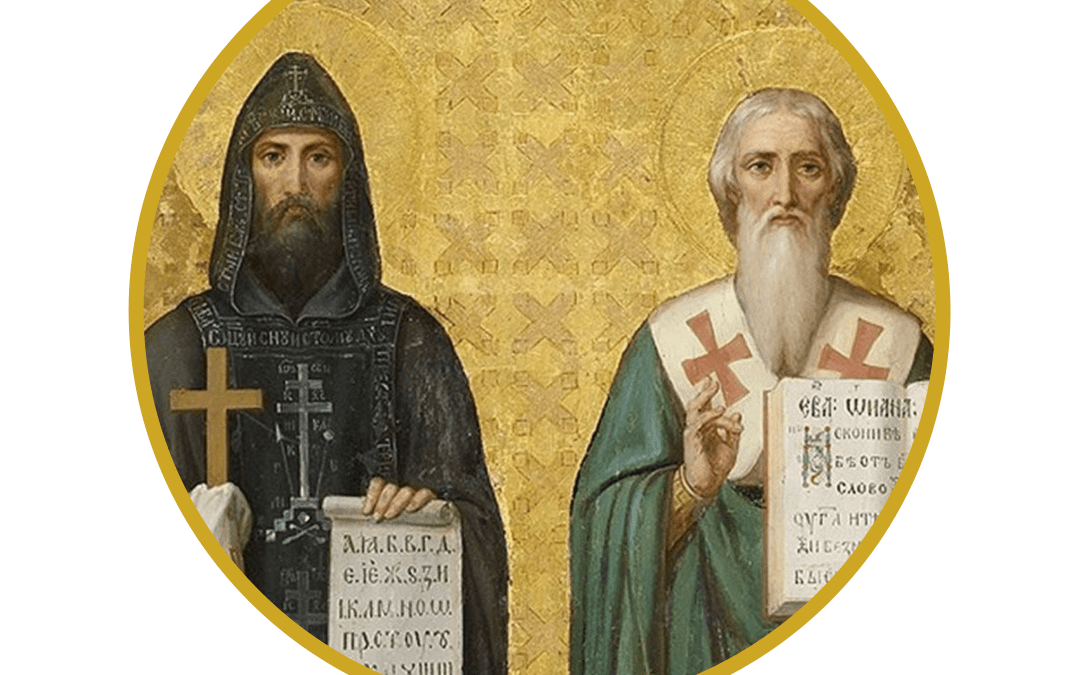
14 February: Feast of Saints Cyril and Methodius. Today, the Church honors two brothers known as the “Apostles of the Slavs” for their tireless work in spreading the Gospel throughout Eastern Europe. Born into a prestigious senatorial family in Thessalonica, in 815 and 826, Cyril and Methodius received an excellent education but renounced their wealth and status. They chose instead to become priests. Both were in a monastery when authorities from the Khazar Empire sent for a Christian missionary. Cyril was chosen and Methodius accompanied. They converted many. By the middle of the ninth century, Prince Rastislav of Moravia wrote to the Byzantine Emperor Michael III, asking for teachers who could teach his people the Christian faith in their own language. Cyril and Methodius were chosen. When they set out on this missionary journey, letters of a new Slavonic alphabet were revealed to them in answer to prayer. Together, they invented the “Cyrillic alphabet” as a way to communicate the faith. They translated the Scriptures and the Liturgy into this Slavonic. They said of their alphabet, ‘Receive this gift, which is more precious and greater than all silver and gold and precious stones and all magnificent wealth’. The two labored in Moravia for years, achieving great success in spreading the Faith. Their Byzantine origins and use of the vernacular language caused German church officials to regard them with suspicion. However, after being summoned to Rome, they met with Pope Adrian II who warmly approved of their methods. Cyril and Methodius were commended by the pope for their missionary activity and ordained bishops. Yet Cyril would not return to Moravia; he died in Rome on February 14, 869. He is buried in the Basilica of San Clemente. Methodius returned to Moravia and labored as a missionary among the Hungarians, Bulgarians, Dalmatians, and in Carinthia. Falling again under suspicion, he returned to Rome and defended the use of the Slavonic language in the liturgy. The Pope bestowed upon him the dignity of archbishop. After his return to Moravia, Methodius spread the light of faith in Bohemia and Poland, and went to Moscow to establish the diocese of Kiev. He suffered imprisonment for three years under German critics; Pope John VIII managed to have Methodius freed and reinstated as archbishop. Pope John VIII continued to support Methodius’ use of the Slavic language, despite continuing controversy with the German church. Eventually, with the help of Greek priests, Methodius translated the whole Bible into the language that is known today as Church Slavonic. After a life spent spreading the Faith, Methodius died on April 6, 885. Both brothers are venerated in the Orthodox Church as saints with the title of “equal-to-apostles”. In 1880, Pope Leo XIII introduced their feast into the calendar of the Roman Catholic Church. In 1980, Pope St. John Paul II declared them co-patron saints of Europe, together with Saint Benedict of Nursia.
Saint Valentine: who was he?
Although hard to verify, legend states that Valentine, along with St. Marius, aided Christian martyrs during the Claudian persecution. Claudius issued a decree forbidding marriage, to increase army troops (believing single men better soldiers than married men). Valentine defied this decree and urged young lovers to come to him in secret to be married. Eventually he was discovered, arrested, and condemned to death. While in prison, Valentine befriended the jailer and his blind daughter. The daughter often him brought food and messages. Valentine was able to convert both father and daughter to Christianity. Legend says he also miraculously restored the daughter’s sight. The night before his execution, he wrote a farewell message to the girl and signed it affectionately “From Your Valentine,” a phrase that lives on today. He was executed on February 14, 273. The Martyrology says, “At Rome, on the Flaminian Way, the heavenly birthday of the blessed martyr Valentine, a priest. After performing many miraculous cures and giving much wise counsel he was beaten and beheaded under Claudius Caesar.” A valentine has become a universal symbol of friendship and affection shared on the anniversary of his death: St. Valentine’s Day.
(sources: Catholicnewsagency.com; catholicculture.org; Fr. Tim Pike, CMP; The Catholic All Year Compendium by K. Tierney)
Recent Comments